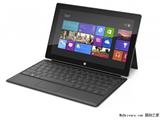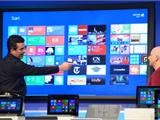Intel launches educational tablets, attempting to prove itself through market segmentation.
Unexpectedly, Intel released two tablets targeting the education market on its official website. Unlike previous offerings of reference design platforms, these two products were designed by Intel.
Both products are aimed at the low-end market and are equipped with Atom processors. The smaller one has a 7-inch screen with a resolution of 1024*600, powered by the Atom Z2420 processor, with 1GB RAM, and reportedly offers up to 8 hours of battery life. The other model features a 10.1-inch screen with a resolution of 1280*800, powered by the Atom Z2460 processor, with 1GB RAM, and offers 6.5 hours of battery life.
Both products come preloaded with Intel software, such as McAfee Mobile Security, an anti-theft alarm system (Education Theft Deterrent), and the Kno reader, which Intel invested in. Relevant educational software includes drawing tools, notebooks, modeling experiments, etc. Additionally, Intel has launched accompanying learning accessories, including temperature probes and magnifying glasses attached to cameras.
From the product features, it is clear that Intel is no stranger to the education market, as it offers a wide range of tools specifically targeted at education. In fact, this is Intel's second foray into educational tablets. Back in April 2012, Intel introduced the StudyBook tablet, also aimed at the education market. Now, with increased investment, Intel believes that this market can accelerate the adoption of its mobile chips.
Since the launch of the Medfield platform in 2012, Intel's mobile chips have not received enthusiastic market responses. The main reasons lie in entering the market late, lacking support from the industrial chain, and most mainstream manufacturers still being part of the ARM camp.
Entering the education market reflects Intel's competitive strategy, hoping to break into the market through such niche markets. During a TechCrunch interview with Rongkun Chen, General Manager of Intel Mobile Communications Division China Region in June, it was learned that Intel is heavily investing in the low-end smartphone and tablet computer market. Its low-end products are being shipped in large quantities to third-world countries by Shenzhen manufacturers. By the end of this year, tablets equipped with the Bay Trail platform will be widely available.
Despite not yet gaining support from a large number of mainstream manufacturers, by operating in these niche markets and gradually accumulating users, there is an opportunity to penetrate the mainstream market. This is the best solution for Intel, which is currently at a disadvantage.
The capacity of the education market may not match the mainstream market, but it greatly benefits brand building. As long as there are successful products, they can gain recognition. The education market was originally dominated by PCs, but it is now shifting towards tablet devices. In the summer of 2012, the iPad alone achieved 1 million units in educational sales, surpassing PC sales, indicating a significant market.
Penetrating the mainstream population through niche markets is a path attempted by many companies facing market setbacks. It is rumored that Microsoft also plans to use this method to boost Surface RT sales.
The title image comes from Mashable.



